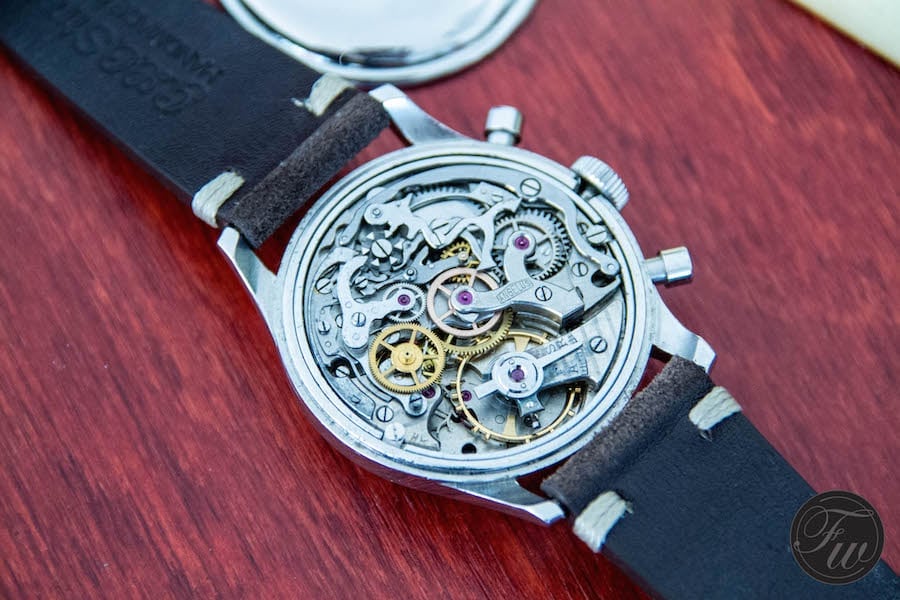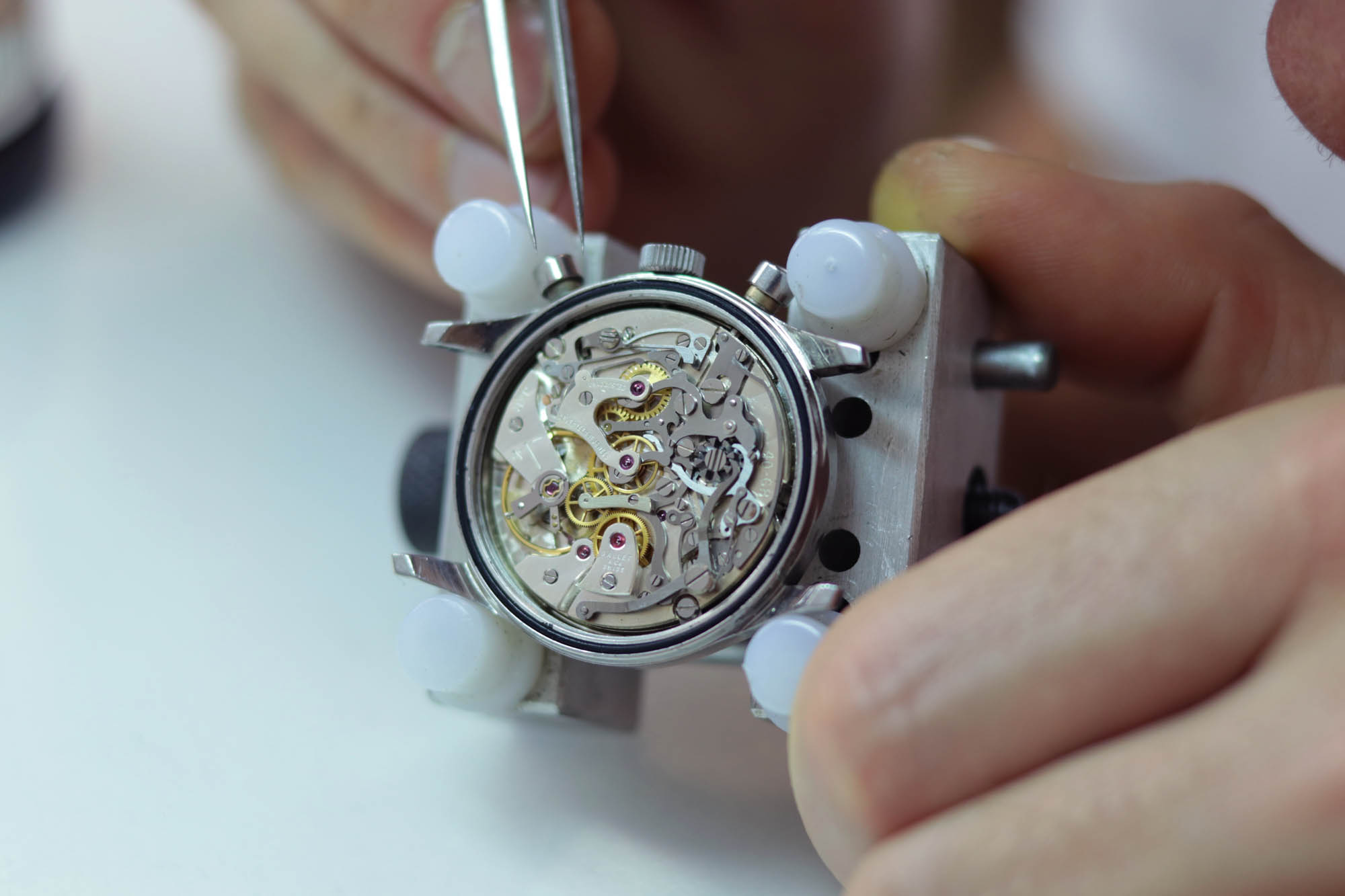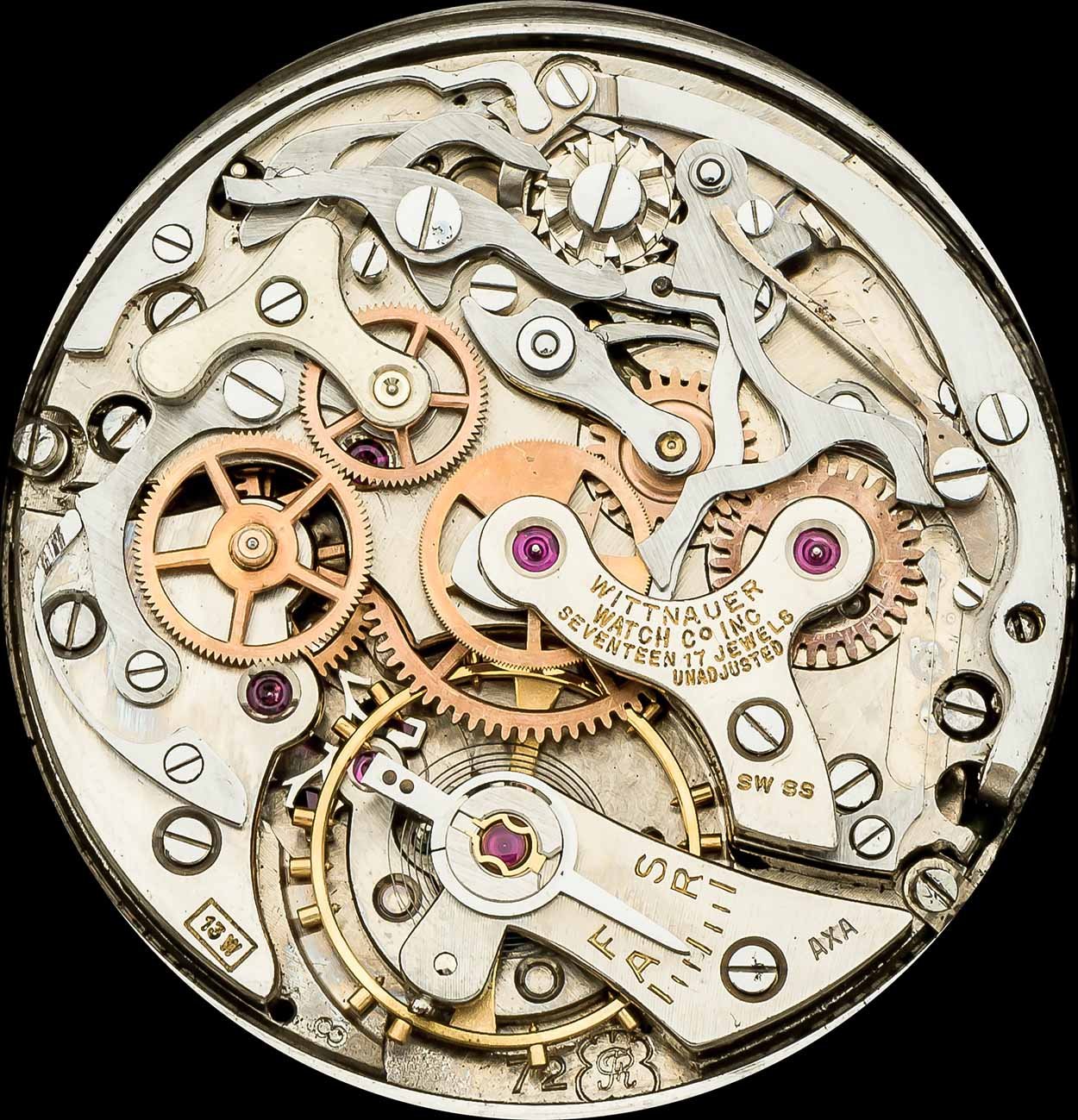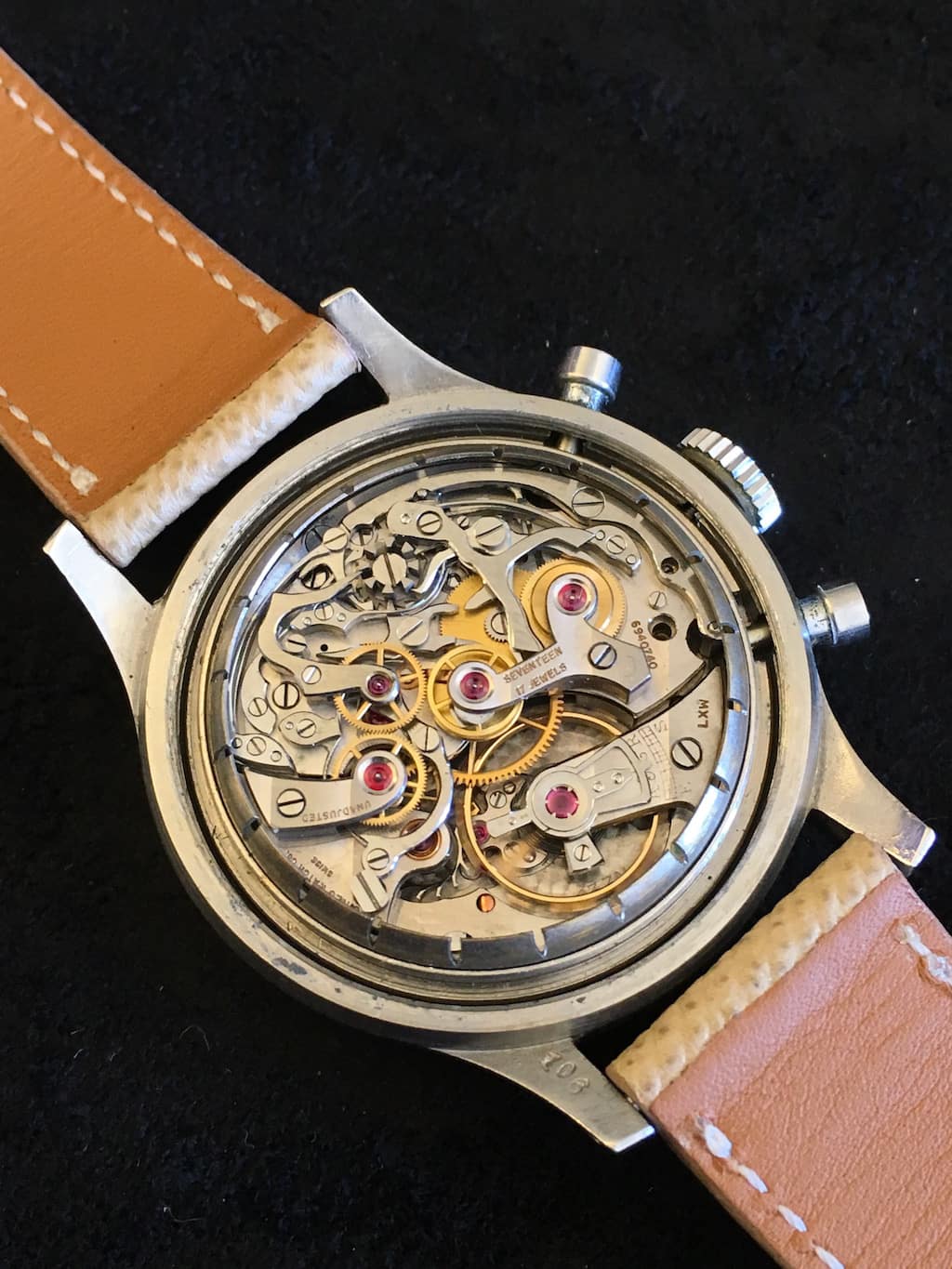Balazs’ Top 5 Iconic Vintage Chronograph Calibers
What makes a watch fan fall for a particular timepiece? Is it the dial? Or perhaps the case shape? Maybe the complication of the watch in question? When it comes to vintage watches, and especially chronographs, the answer is often, “the movement.”
In this article, I collected 5 vintage chronograph movements that I find the most iconic. Clearly, I could have done a Top 10 or Top 20 article. And I might in the future. Until then, however, I hope you enjoy the list of my Top 5 iconic vintage chronograph calibers, listed in no particular order.
Angelus 215
It is no secret that the Angelus brand is near and dear to my heart. Partly due to its connection to the Hungarian Air Force, and partly because I love a great underdog story. When I first heard of Angelus, the brand didn’t even have half of its popularity today. A shame, really, as Angelus was not only known for its amazing watches but also its in-house movements. Take the caliber 215, for example. It is safe to say that this caliber is easily the most popular from the amazing lineup manufacture movements. The 215 is a manual wind, column-wheel chronograph movement that came to the market around 1935. It is the improved version of the earlier Angelus caliber 210. The 215 has 2 sub-dials (including a 45-minute chronograph counter). Other brands often used the 215. Most notably, it was in the iconic Panerai Mare Nostrum dive chronographs.
Venus 175
Legendary movement manufacturer Venus created the caliber 175 in 1942. It was based on the Venus 150, which was released in 1938. The 175 stayed in production until 1960. During this time, Venus produced several versions such as the Venus 184 with date, moon phase, and hour counter, or the Venus 189, a split chronograph with date and hour counter.
However, the base of all of them was the caliber 175. We are talking about a manual wind, column wheel, 17-jewel chronograph movement with an 18,000vph operating frequency. Basic models had 2 sub-dials; running seconds at 9 and 30-min counter at 3. More complicated versions also had a third sub-dial for a 12-hour chronograph register. Throughout its close to 20 years of lifespan, many prestigious brands used the Venus 175 caliber. The most recognizable name of all is probably Breitling. Others included Grana, Tavannes, Arsa, or Mulco.
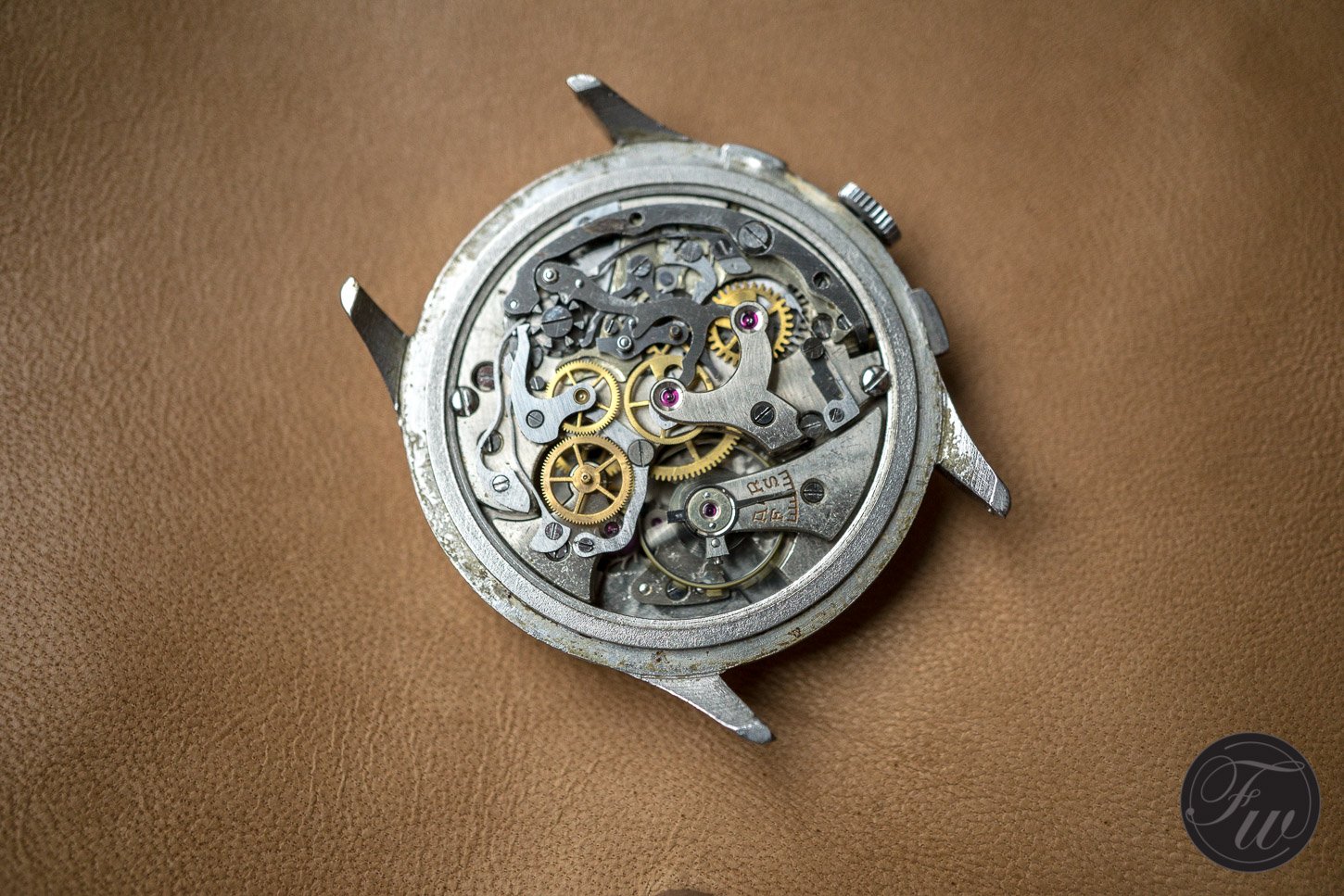
Venus 175 in a Grana (Kurt Fréres) chronograph
Excelsior Park (EP) 40
If we ever did a vintage chronograph movement beauty contest (hm, not a bad idea at all), I’m sure the Excelsior Park (EP for short) 40 would be a finalist. To me, this is one of the most elegant calibers ever created — simple, clean, yet different from others. EP 40 is not the brand’s earliest example. It is also not too complex. However, it is widely used among many vintage chronographs: a manual wind, the 17-jewel caliber with an 18,000vph train count. The Excelsior Park 4 serves as the base for the EP 40. The main difference between the two was the subdials. The EP 40 had a 12h register. Most of the time, one can find Excelsior Park calibers in Gallet chronographs. In a way, Gallet to EP was what Omega was to Lémania. Other brands also used the Excelsior Park 40 caliber. Namely, Sinn, Certina, Girard Perregaux, and others.
Valjoux 72
One of the most recognizable chronograph movements today is the Valjoux 7750. The list of watch companies that use this caliber is endless. Still, vintage fans associate the name Valjoux with another number — 72. Yes, the Valjoux 72 sits on the throne of iconic vintage chronograph calibers. Is it the best? Probably not. The most complex? I don’t think so. Why then? Simply because the Valjoux 72 powers the most sought-after vintage chronograph to date, the Rolex Daytona.
The Valjoux 72 came to market in 1938 and hung around until 1974. During this time, many iterations saw the light of day. The 72 is a manual wind, 17-jewel chronograph movement, with a 48-hour power reserve. Rolex was not the only major brand to equip its watches with a Valjoux 72 movement. Heuer did (Autavia, Carrera), so did Breitling (Navitimer), Gallet, Certina, Longines, Eterna, and many more.
Longines 13ZN
I saved the best till last. Well, the most complicated and rare of them all, at least. Let’s talk about the Longines 13ZN caliber. If you are a vintage fan, you surely know of the movement. If you only know modern Longines, I’m about to blow your mind…
The 13ZN was released in 1936. It was Longines’ manual wind, chronograph movement with 2 sub-dials…and a flyback function. It was a 17-jewel, column-wheel caliber that still influences today’s watchmaking. The 13ZN was not Longines’ first flyback chronograph caliber. That honor goes to the Longines caliber 13.33Z. Undoubtedly, the 13ZN is the most known and popular out there. Subsequently, it is also one that commands high prices these days. Not only in complication but also looks, the 13ZN stands out. As graceful as a chronograph caliber can look, the 13ZN is breathtakingly beautiful.

